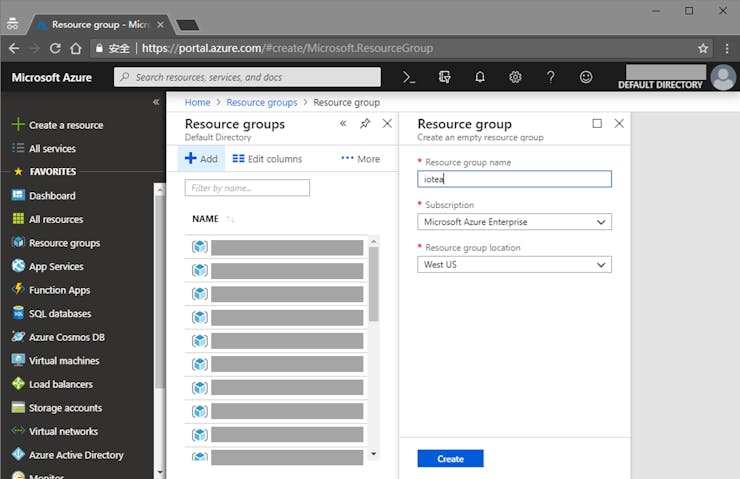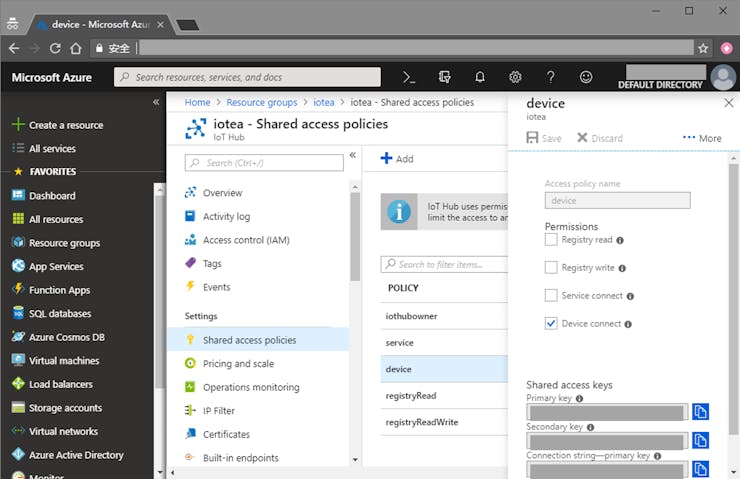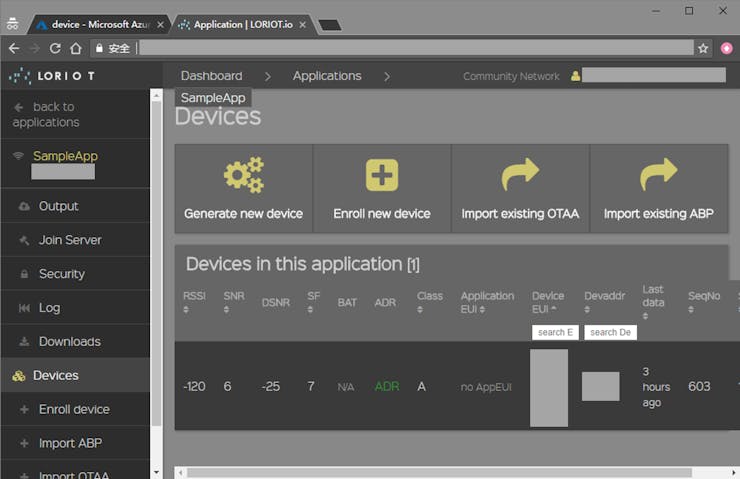Seeed IoTea LoRa Solution (with Azure, Update 1812)
by Seeed Studio in Circuits > Raspberry Pi
1292 Views, 9 Favorites, 0 Comments
Seeed IoTea LoRa Solution (with Azure, Update 1812)

Microsoft Azure is a cloud service which provides more powerful and stable computing power. This time we tried sending our IoTea data to it.
Things Used in This Project
Hardware components
- Grove - Carbon Dioxide Sensor(MH-Z16)
- Grove - Digital Light Sensor
- Grove - Dust Sensor(PPD42NS)
- Grove - Oxygen Sensor(ME2-O2-Ф20)
- Soil Moisture & Temperature Sensor
- LoRa LoRaWAN Gateway - 868MHz Kit with Raspberry Pi 3
- Grove - Temp&Humi&Barometer Sensor (BME280)
Software apps and online services
- Microsoft Visual Studio 2015
- Microsoft Azure
Story
On Mengding Mountain northeast of Ya’an, Sichuan, the mountain ridge runs west to east in a sea of green. This is a most familiar sight for 36-year-old Deng, one of the very few Mengding tea makers of his generation, with a plantation of 50mu (=3.3 hectares) situated at 1100m above sea level. Deng comes from a family of tea makers, but carrying on the family legacy is not an easy task. “Our teas are grown at high altitude in an organic environment to ensure its excellent quality. But at the same time, the growth density is low, cost is high and budding is uneven, making tea hard to harvest. That’s why high-mountain teas are normally small harvests and their values are not reflected on the market.”For the past two years, Deng has been trying to raise consumer awareness of high-mountain tea to promote their value. And when he met Fan, who was looking for a plantation to implement Seeed’s IoTea technology, a perfect match for a solution was made.
Hardware Connection
Please follow Previous Tutorial to connect your hardware.
Cloud Configure
Step 1. Create Resource Group
Click here to login Microsoft Azure. And then, enter Resource groups in list on the left of dashboard, click Add to add a Resource Group.

A Resource Group is used to manage all resources in project, after using cloud resources, delete resource group to delete all resources to avoid charges. In opened page, fill Resource group name(such as iotea), choose Subscription and Resource group location if needed, click Create to create a Resource Group.
Step 2. Create Iot Hub
Now you can create a cloud resource, click Create a resouce on the left, choose Internet of Things - Iot Hub, it will open a new page.
In Basics tab, choose the Resource Group you just created, and fill Iot Hub Name(such as iotea), choose Subscription and Region if needed, and then turn to Size and scle tab.

In Size and scale tab, choose F1: Free tier or B1: Basic tier in Pricing and scale tier combo, Basic Tier will take 10.00 USD per month. Finally, turn to Review + create tab check you input and click Create to create a Iot Hub.

Step 3. Configure LORIOT
Enter the Iot Hub you just create, click Shared access policies - device, copy the Primary key in page on the right.

Open a new brower window(or tab), login your LORIOT Control Panel, turn to Application - SampleApp, click Data output in Control group - Change. In Change output type group, choose Azure Iot Hub, fill your Iot Hub Name and Primary key, and click Confirm change button on the bottom.

Step 4. Add Iot device
Click Devices in list on the left in LORIOT, copy your Device EUI.

Back to Azure Iot Hub, click Iot devices in the list on the left of Iot Hub. Click Add, fill Device EUI to Device ID in opened page.
IMPORTANT: DELETE ALL SEPRATOR IN DEVICE EUI, let it looks like 1122334455667788.

Click Save, all done.
Step 5. Receive D2C(Device to Cloud) Messages
You can follow Microsoft Docs to read D2C Messages.
Software Programming
Software Programming is splitted to 3 parts: Node, Gateway and Website, please follow Previous Tutorial to program Node Part and Gateway Part. Steps 1 through 8 of the Website Part are also same as Previous Tutorial.
If you already configured Microsoft Azure, open a terminal, enter your website's root folder, activate virtual enviroment:
cd ~/iotea-hb source bin/activate
install Azure Event Hub module via pip, and create a new.py file(such as iothub_recv.py):
pip install azure-eventhub touch iothub_recv.py
and then write codes following down to it:
# --------------------------------------------------------------------------------------------
# Copyright (c) Microsoft Corporation. All rights reserved.
# Licensed under the MIT License. See License.txt in the project root for license information.
# --------------------------------------------------------------------------------------------
from azure import eventhub
from azure.eventhub import EventData, EventHubClient, Offset
import logging
logger = logging.getLogger('azure.eventhub')
import db, json, time, datetime
def get_time():
cntime = datetime.datetime.now() + datetime.timedelta(hours = +8)
date = cntime.strftime('%Y-{}-{}').format(cntime.strftime('%m').zfill(2), cntime.strftime('%d').zfill(2))
hour = cntime.strftime('%H').zfill(2)
minute = cntime.strftime('%M').zfill(2)
second = cntime.strftime('%S').zfill(2)
return [date, hour, minute, second]
def get_iothub_data():
list = ['0'] * 11
client = EventHubClient.from_iothub_connection_string('', debug=True)
receiver = client.add_receiver("$default", "3", operation='/messages/events', offset = Offset(datetime.datetime.utcnow()))
try:
client.run()
eh_info = client.get_eventhub_info()
print(eh_info)
received = receiver.receive(timeout=5)
print(received)
for item in received:
message = json.loads(str(item.message))
print(message)
if 'data' in message:
data = message['data']
air_temp = str(int(data[0:2], 16))
air_hum = str(int(data[2:4], 16))
pressure = str(int((data[4:8]), 16))
co2 = str(int(data[8:12], 16))
dust = str(int(data[12:16], 16))
illumination = str(int(data[16:20], 16))
o2 = str(round(int(data[20:22], 16) / 10, 1))
soil_temp = str(int(data[22:24], 16))
soil_hum = str(int(data[24:26], 16))
voltage = str(round(int(data[26:28], 16) / int('ff', 16) * 5, 1))
error = str(int(data[28:], 16))
list = [air_temp, air_hum, pressure, co2, dust, illumination, o2, soil_temp, soil_hum, voltage, error]
finally:
client.stop()
return list
while True:
list = get_time() + get_iothub_data()
db.insert(list)
print(list)
Before you running the program, change your connection string in
client = EventHubClient.from_iothub_connection_string('<your_connection_string>', debug=True) you can get your connection string by clicking Shared access policies - iotowner in Iot Hub, the Connection string-primnary key in opened page is the connection string.

After that, you can start the program:
gunicorn iothub_recv:app